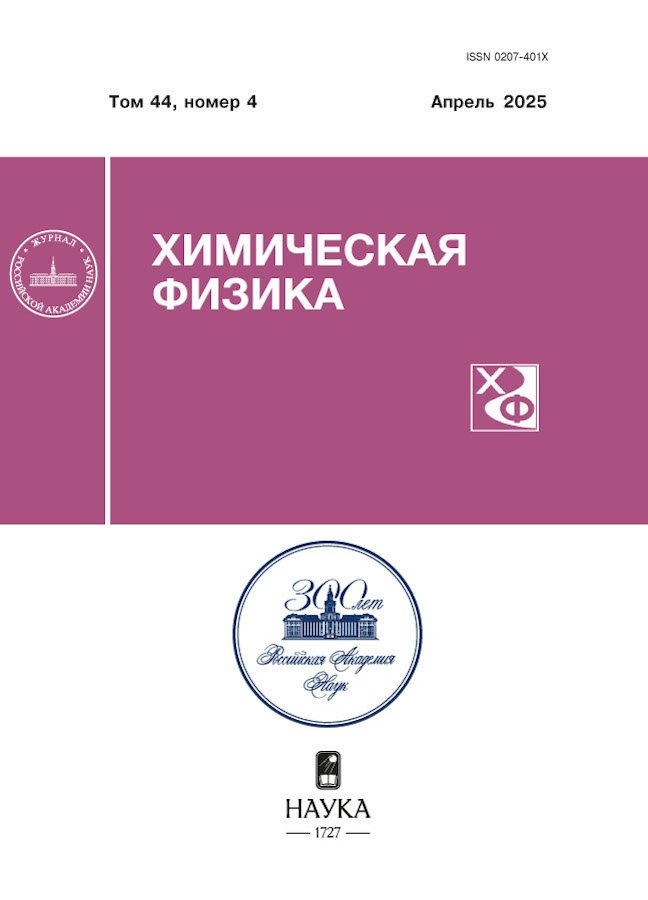The peculiarities of a behavior of tanks with compressed and liquefield hydrogen in a fire
- Autores: Shebeko Y.N.1
-
Afiliações:
- All-Russian Research Institute for Fire Protection (VNIIPO), the Ministry of the Russian Federation for Civil Defense, Emergencies and Elimination of consequences of Natural Disasters (EMERCOM of Russia)
- Edição: Volume 44, Nº 4 (2025)
- Páginas: 97-105
- Seção: Combustion, explosion and shock waves
- URL: https://transsyst.ru/0207-401X/article/view/682731
- DOI: https://doi.org/10.31857/S0207401X25040115
- ID: 682731
Citar
Texto integral
Resumo
An analytical review of investigations dedicated to a behavior of tanks with compressed and liquefied hydrogen in a fire is presented. It was mentioned that the compressed hydrogen is stored as a rule in vessels made of composite materials, and the liquefied hydrogen is stored in double-wall isothermal tanks. The vessel with a compressed hydrogen is destructed after 5-15 min of an action of a fire, if no fire proofing is made for these vessels. A destruction of the vessel made of the composite materials takes place at gas pressures exceeding an initial pressure not more than on 10%. A rupture occurs due to a loss of polymer compound. A fire resistance limit of a such vessel is inversely proportional to an intensity of a thermal action of the fire. But the fire resistance limit of the liquefied hydrogen tank can reach several tens minutes depending on parameters of a thermal isolation. Shock waves, fireballs and fragments of the tanks are the main hazardous factors of the accidents with a rupture of the hydrogen tanks. Sizes of hazardous zones can reach several tens meters depending on the parameters of the tanks. The largest sizes were observed in the case of the fireballs.
Texto integral
Sobre autores
Yu. Shebeko
All-Russian Research Institute for Fire Protection (VNIIPO), the Ministry of the Russian Federation for Civil Defense, Emergencies and Elimination of consequences of Natural Disasters (EMERCOM of Russia)
Autor responsável pela correspondência
Email: yn_shebeko@mail.ru
Rússia, Moscow
Bibliografia
- Park Byoungjik, Kim Yangkyun. Int. J. Hydrogen Energy. 2023. V. 48. P. 34987.
- D.M. Gordienko, Yu.N. Shebeko. Occupational Safety in Industry. 2022. N. 2. P. 7 [in Russian].
- Yu.N. Shebeko. Fire Safety. 2020. N. 4. P. 36 [in Russian].
- D.M. Gordienko, Yu.N. Shebeko. Fire and Explosion Safety. 2022. V. 31. N. 2. P. 41 [in Russian].
- Yu.N. Shebeko. Fire and Explosion Safety. 2020. V. 29. N. 4. P. 42 [in Russian].
- Yu.N. Shebeko, I.A. Bolodian. News of Gas Industry Science. Scientific and Technical Book. 2022. N. 2(51). P. 151 [in Russian].
- Yu.N. Shebeko. Fire Safety. 2023. N. 1. P. 17 [in Russian].
- A.M. Tereza, G.L. Agafonov, E.K. Anderzhanov et al. Rus. J. Phys. Chem. B 2023. V. 42. N. 3. P. 70.
- K.Ya. Troshin, N.M. Rubtsov, G.I. Tsvetkov, V.I. Chernish, I.O. Shamshin. Rus. J. Phys. Chem. B 2023. V. 42. N. 3. P. 79.
- S.I. Sumskoi, A.S. Sophin, S.H. Zainetdinov, M.V. Lisanov, A.A. Agapov. Rus. J. Phys. Chem. B 2023. V. 42. N. 3. P. 63.
- A.A. Vasilev, V.A. Vasilev. Combustion, Explosion and Shock Waves. 2024. V. 60. N. 5. P. 30.
- D. Halm, F. Fouillen, E. Lain et al. Int. J. Hydrogen Energy. 2017. V. 42. P. 20056.
- Shen Chuanchuan, Ma Li, Huang Gai et al. J. Loss Prev. Process Ind. 2018. V. 55. P. 223.
- S. Kashkarov, D. Makarov, V. Molkov. Int. J. Hydrogen Energy. 2018. V. 43. N. 21. P. 10185.
- R. Zalosh. Proc. 5th Int. Sem. on Fire and Explosion Hazards. Edinburgh, 2008. P. 149.
- S. Kashkarov, Z. Li, V. Molkov. Int. J. Hydrogen Energy. 2020. V. 45. P. 2429.
- M. Dadashzadeh, S. Kashkarov, D. Makarov, V. Molkov. Ibid. 2018. V. 43. P. 6462.
- V. Molkov, S. Kashkarov. Ibid. 2015. V. 40. N. 36. P.12581.
- V. Molkov, W. Dery. Ibid. 2020. V. 45. P. 31289.
- P. Blanc-Vannet, S. Jallais, B. Fuster, F. Fouillen, D. Halm. Ibid. 2019. V. 44. P. 9100.
- V. Molkov, M. Dadashzadeh, S. Kashkarov, D. Makarov. Ibid. 2021. V. 46. P. 36581.
- Y. Kim, D. Makarov, S. Kashkarov, P. Joseph, V. Molkov. Ibid. 2017. V. 42. N. 11. P.7297.
- F. Ustolin, N. Paltrinieri, G.Landucci. J. Loss Prev. Process Ind. 2020. V. 68. P. 104323.
- K. Pehr. Int. J. Hydrogen Energy. 1996. V. 21. P. 387.
- A.F. Roberts. Fire Safety J. 1982. V. 4. P. 197–212.
- S. Betteridge, L. Phillips. Symposium series no.160. Hazards 25. Shell, 2015.
- K. Wingerden, M. Kluge, A.K. Habib, F. Ustolin, N. Paltrinieri. Chem. Eng. Trans. 2022. V. 90. P. 547.
- D. Cirrone, D. Makarov, V. Molkov. Int. J. Hydrogen Energy. 2023. V. 48. P. 8716.
Arquivos suplementares










